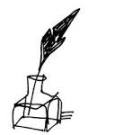
“Majorities are generally wrong, if only in their reasons for being right.”
George Saintsbury, The Book of the Queen’s Dolls’ House
Terry Teachout on the arts in New York City

“Majorities are generally wrong, if only in their reasons for being right.”
George Saintsbury, The Book of the Queen’s Dolls’ House

Peter Pears, Benjamin Britten, and the London Symphony perform “When most I wink, then do my eyes best see,” the final movement of Britten’s Nocturne. The text is by Shakespeare. This performance was originally filmed by the BBC on December 20, 1964:
(This is the latest in a series of arts- and history-related videos that appear in this space each Monday, Wednesday, and Friday)
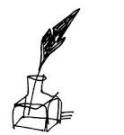
“Fanatical and, as it were, monomaniacal efforts to prove a thing true often bring indifference to telling falsehoods about it.”
George Saintsbury, The Book of the Queen’s Dolls’ House
* * *
“Be More Chill” has moved to Broadway after a sold-out downtown run whose popularity was fueled by an unexpected tsunami of grass-roots social-media enthusiasm. It now looks set to replicate its off-Broadway success, as well it should. Grudging reviews notwithstanding, “Be More Chill” is one of the strongest new musicals of the past decade, a charming, astutely crafted tale of neurotic post-millennial geeks in love whose appeal is in no way limited to those whom it portrays….
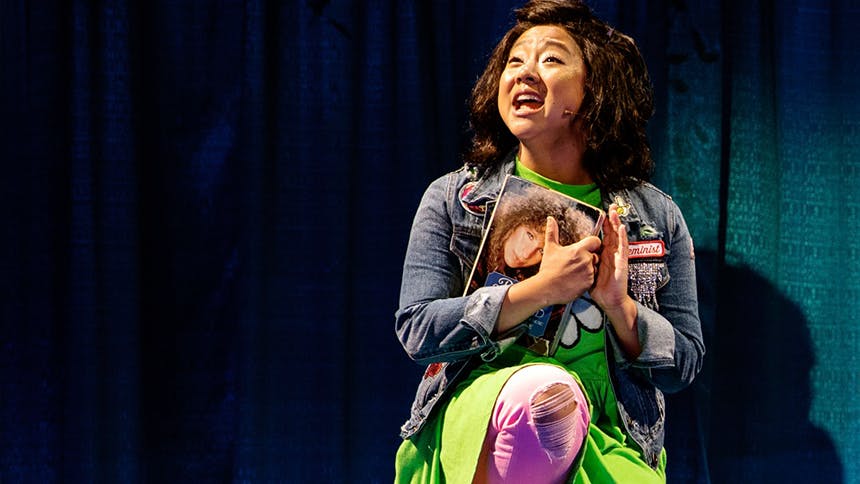
“Be More Chill” plays like a cross between “Dear Evan Hansen” and “Napoleon Dynamite.” Jeremy (Will Roland), the protagonist, is an incapacitatingly shy New Jersey high-school junior whose congenital nerdiness prevents him from asking out Christine (Stephanie Hsu), an explosive enthusiast who acts in school plays in order to ameliorate her own social awkwardness (“Life is easy in rehearsal/You follow a script/So you know what comes next”). Then he’s introduced to the Squip, an under-the-counter drug that instantaneously turns those who consume it into popular kids. Of course there’s a catch, about which I’ll say no more than that it has dystopian implications…
The score comes at you like a fistful of Roman candles: Not since “Hamilton” has a musical opened on Broadway that is so closely in tune with contemporary pop-music style. Just as important, though, Mr. Iconis’ songs are embedded in a book that follows to the letter the time-honored structural rules of school-of-Hammerstein musical theater….
“Kiss Me, Kate,” Cole Porter’s ingenious 1948 transformation of “The Taming of the Shrew” into a backstage musical, is back on Broadway for the first time in more than 17 years. The Roundabout Theater Company has reunited the production team behind its 2016 revival of “She Loves Me” for a big-budget version directed by Scott Ellis and choreographed by Warren Carlyle whose cast is headed by Kelli O’Hara and Will Chase. Would that it were even half as good, but this “Kiss Me, Kate” is bland and unimaginative….
* * *
To read my review of Be More Chill, go here. To read my review of Kiss Me, Kate, go here.A rehearsal for “I Love Play Rehearsal,” a number from Be More Chill:

We’re back! The twenty-seventh episode of Three on the Aisle, the twice-monthly podcast in which Peter Marks, Elisabeth Vincentelli, and I talk about theater in America, is now available on line for listening or downloading.
Here’s an excerpt from American Theatre’s “official” summary of the proceedings:
To listen, download the latest episode, read more about it, or subscribe to Three on the Aisle, go here. In case you missed any previous episodes, you’ll find them all here.First, we discuss recent cease-and-desist notices sent to regional companies putting on the 1969 Christopher Sergel adaptation of To Kill a Mockingbird by the producers of the current Aaron Sorkin adaptation running on Broadway. Then we look into our mailbag and address your concerns about the coverage of Slave Play, your disagreements on our discussion of filmed theatre, and a question as to what the day-to-day work of criticism really entails.
To close the show, the critics discuss Madeleine George’s Hurricane Diane, Roundabout’s Merrily We Roll Along, and Peter gets in the ring again to pound on Be More Chill, this time because it just opened on Broadway.

The Hallmark Hall of Fame TV version of August Wilson’s The Piano Lesson, adapted by Wilson from his 1987 play and directed by Lloyd Richards, originally telecast by CBS on February 5, 1995. This version of the play, which stars Charles S. Dutton and Alfre Woodard, is based on Richards’ original 1990 Broadway production of the play and features most of the cast of that production:
(This is the latest in a series of arts- and history-related videos that appear in this space each Monday, Wednesday, and Friday)
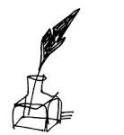
“All of the great leaders have had one characteristic in common: it was the willingness to confront unequivocally the major anxiety of their people in their time. This, and not much else, is the essence of leadership.”
John Kenneth Galbraith, The Age of Uncertainty
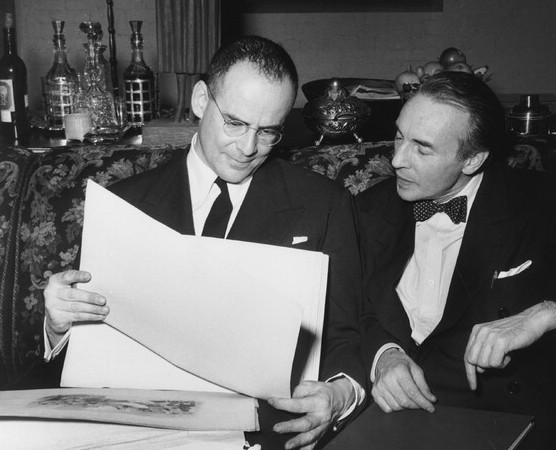
* * *
Twenty-three years after his death, Lincoln Kirstein is receiving the deluxe treatment from New York’s Museum of Modern Art. “Lincoln Kirstein’s Modern,” which opens on Sunday and will be up through June 15, consists of nearly 300 objects—paintings, photos, sculptures, set and costume designs, films, pamphlets, magazines—drawn from MoMA’s permanent collection and brought together to tell the story of Kirstein’s life and work. Yet most people who hear about the exhibition will doubtless find themselves asking the crisp question that Harold Ross, the New Yorker’s founding editor, scrawled in the margin of a manuscript whenever he ran across a name he didn’t recognize: “Who he?”…
Save for a forgotten novel and a barely remembered volume of verse, Kirstein was not a creative artist, and while he managed to turn out a fair amount of criticism, much of it was willfully wrongheaded. When he died, he was best known (if that phrase can rightly be applied to him at all) for having co-founded the New York City Ballet and the School of American Ballet, which he ran in collaboration with George Balanchine, who was incontestably the boss of both operations….
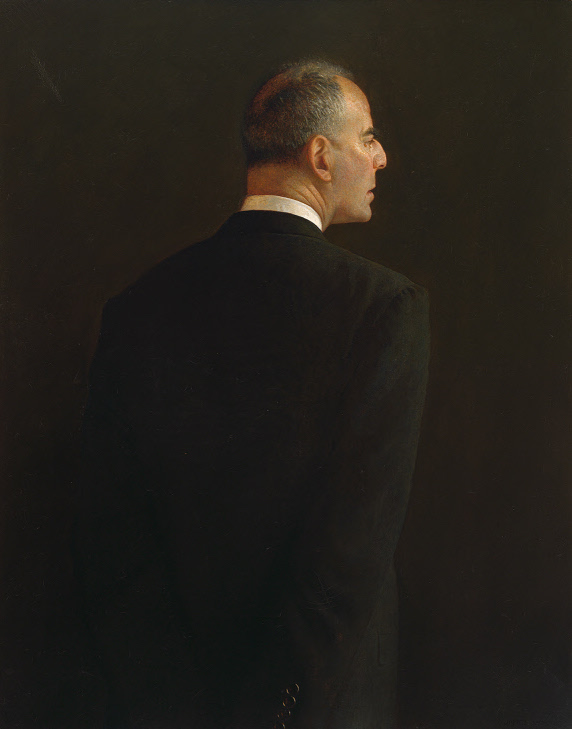
“People have trouble figuring out who I am,” he once remarked. “They can’t make out if I’m a PR man for the City Ballet, or if it was all some kind of accident, or if I’m just a rich boy who tagged along.” What is more, his other achievements were just as likely to be rendered invisible by the fact that he enabled the greatest choreographer of the 20thcentury to make ballets that were performed by a world-class dance company. That alone earned Kirstein a secure place in the history of modern art, one to which the MoMA show devotes ample attention. But “Lincoln Kirstein’s Modern” makes a bigger claim for him, one that is vague to the point of slipperiness: In her introduction to the catalog, Samantha Friedman, who organized the show with Jodi Hauptman, describes Kirstein as a “key connector and indefatigable catalyst who shaped and supported American artists and institutions in the 1930s and ’40s.”
The word I’d use in preference to “catalyst” is “enthusiast.” A wealthy patron of the arts, Kirstein founded Hound & Horn, one of the leading American quarterlies of the interwar years, in 1927, while he was still a Harvard undergraduate. In it and elsewhere, he gave voice to his powerful aesthetic passions. A man of immense determination, he used his time, energy and money to promote a wildly eclectic list of choreographers, composers, visual artists and performers…
* * *
Read the whole thing here.Excerpts from Filling Station and Billy the Kid, a pair of ballets originally produced by Lincoln Kirstein and premiered in 1938:
| M | T | W | T | F | S | S |
|---|---|---|---|---|---|---|
| 1 | 2 | 3 | 4 | 5 | ||
| 6 | 7 | 8 | 9 | 10 | 11 | 12 |
| 13 | 14 | 15 | 16 | 17 | 18 | 19 |
| 20 | 21 | 22 | 23 | 24 | 25 | 26 |
| 27 | 28 | 29 | 30 | 31 | ||
An ArtsJournal Blog